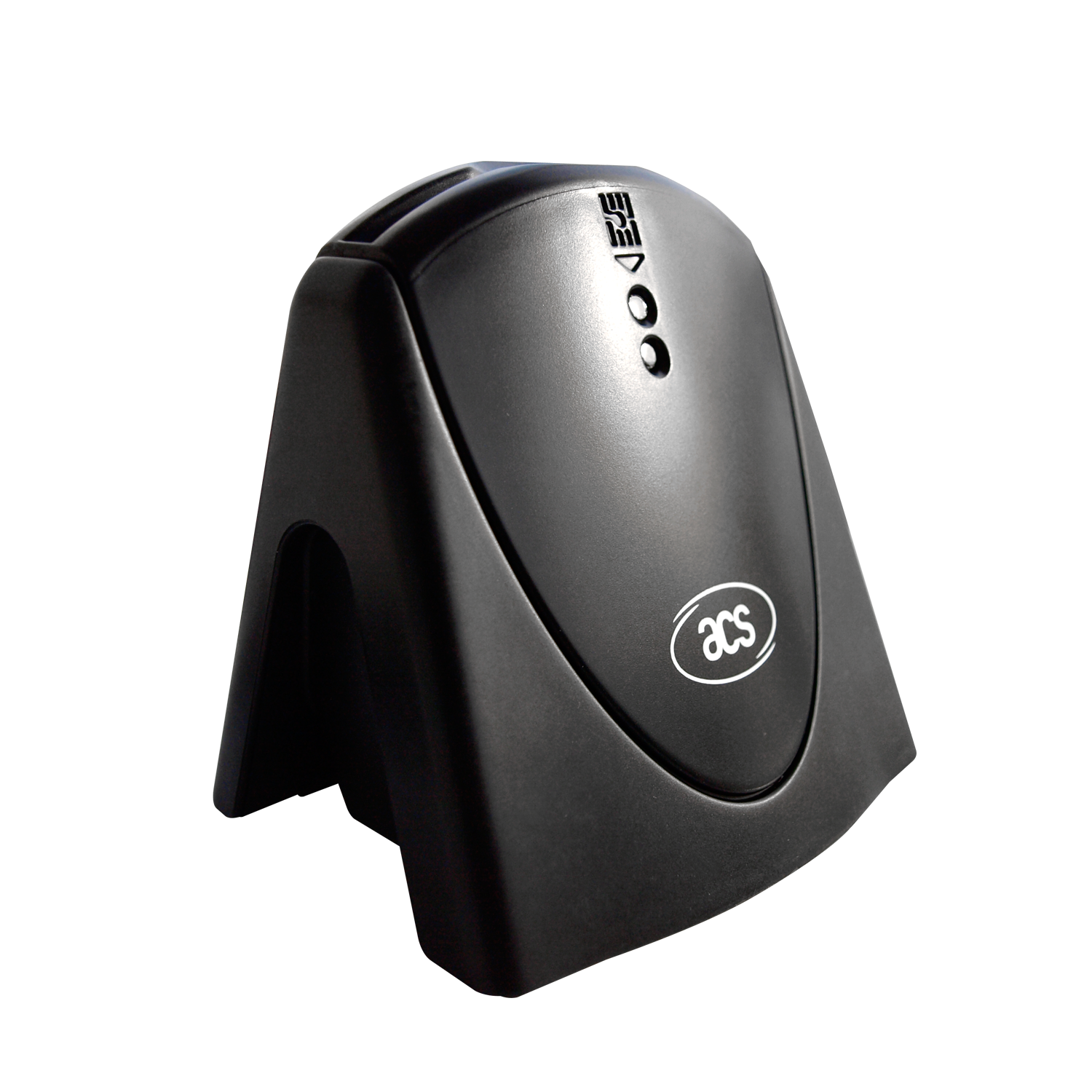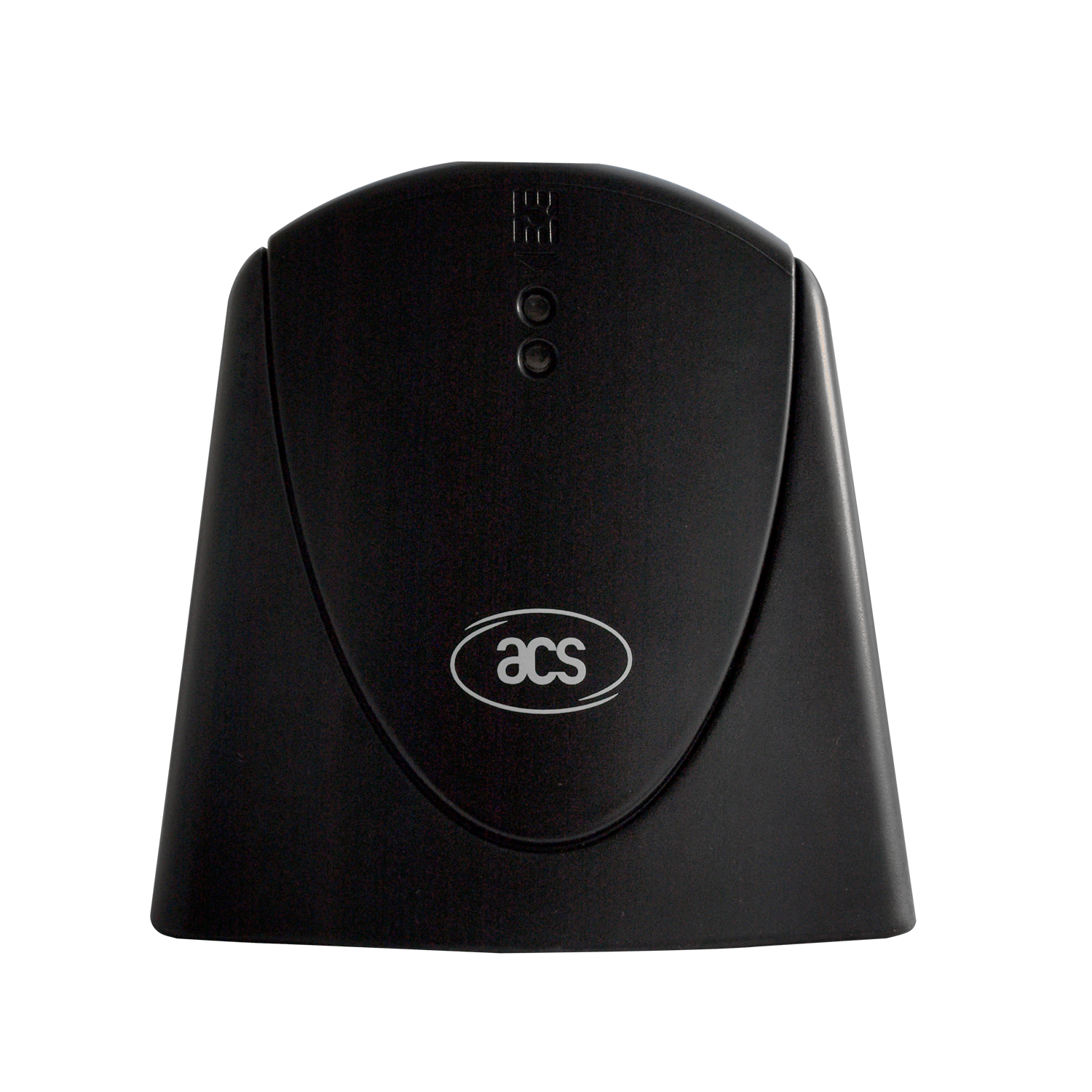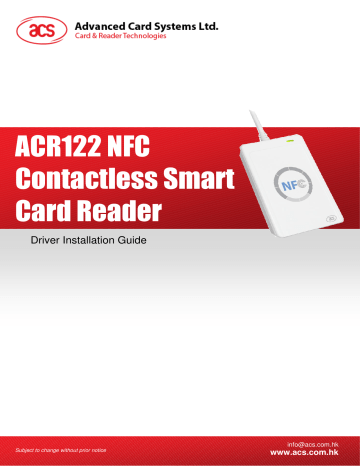
- #ACS SMART CARD READER DRIVER DRIVERS#
- #ACS SMART CARD READER DRIVER CODE#
- #ACS SMART CARD READER DRIVER SERIES#
This does not address the ease with which barcode numbers can be generated from a computer using almost any printer.įingerprint identification, access control The barcode can then be read with an optical reader tuned to the infrared spectrum, but can not easily be copied by a copy machine.
#ACS SMART CARD READER DRIVER CODE#
One attempt to reduce fraud is to print the barcode using carbon-based ink, and then cover the bar code with a dark red overlay. However the same affordability and simplicity makes the technology susceptible to fraud, because fake barcodes can also be created cheaply and easily, for example by photocopying real ones. The advantage of using barcode technology is that it is cheap and easy to generate the credential and it can easily be applied to cards or other items. Sometimes the digits represented by the dark and light bars are also printed to allow people to read the number without an optical reader. There are many different protocols, such as the prevalent Code 39. The organization and width of the lines is determined by the bar code protocol selected.
#ACS SMART CARD READER DRIVER SERIES#
An access control reader can be a magnetic stripe reader, a bar code reader, a proximity reader, a smart card reader, or a biometric reader.Īccess control readers are classified by functions they are able to perform and by identification technology:Ī barcode is a series of alternating dark and light stripes that are read by an optical scanner. Most card readers also offer write capability, and together with the card, this can function as a pen drive.Īccess control card readers are used in physical security systems to read a credential that allows access through access control points, typically a locked door. This allows applications to work without knowledge of the reader details.Ī USB card reader like this one, will typically implement the USB mass storage device class.Ī memory card reader is a device, typically having a USB interface, for accessing the data on a memory card such as a CompactFlash (CF), Secure Digital (SD) or MultiMediaCard (MMC). PKCS#11 is an API designed to be platform-independent, defining a generic interface to cryptographic tokens such as smart cards.
#ACS SMART CARD READER DRIVER DRIVERS#
Readers with this class do not need device drivers when used with PC/SC-compliant operating systems, because the operating system supplies the driver by default.


This framework works with USB devices with the specific device class 0x0B. The latest PC/SC CCID specifications define a new smart card framework.

If the card does not use any standard transmission protocol, but uses a custom/ proprietary protocol, it has the communication protocol designation T=14. This model works by supplying the integrated circuit on the smart card with electricity and communicating via protocols, thereby enabling the user to read and write to a fixed address on the card.Īsynchronous half-duplex byte-level transmission protocol, defined in ISO/IEC 7816-3Īsynchronous half-duplex block-level transmission protocol, defined in ISO/IEC 7816-3.ĪPDU transmission via contactless interface ISO/IEC 14443. Laptop models containing a built-in smart card reader and/or using flash upgradeable firmware.Įxternal devices that can read a Personal identification number (PIN) or other information may also be connected to a keyboard (usually called "card readers with PIN pad").External devices and internal drive bay card reader devices for personal computers (PC).Ī business card reader is a device used to scan and electronically save printed business cards.Ī smart card reader is an electronic device that reads smart cards and can be found in the following form: Modern card readers are electronic devices that can read plastic cards embedded with either a barcode, magnetic strip, computer chip or another storage medium.Ī memory card reader is a device used for communication with a smart card or a memory card.Ī magnetic card reader is a device used to read magnetic stripe cards, such as credit cards. The first were punched card readers, which read the paper or cardboard punched cards that were used during the first several decades of the computer industry to store information and programs for computer systems.



 0 kommentar(er)
0 kommentar(er)
